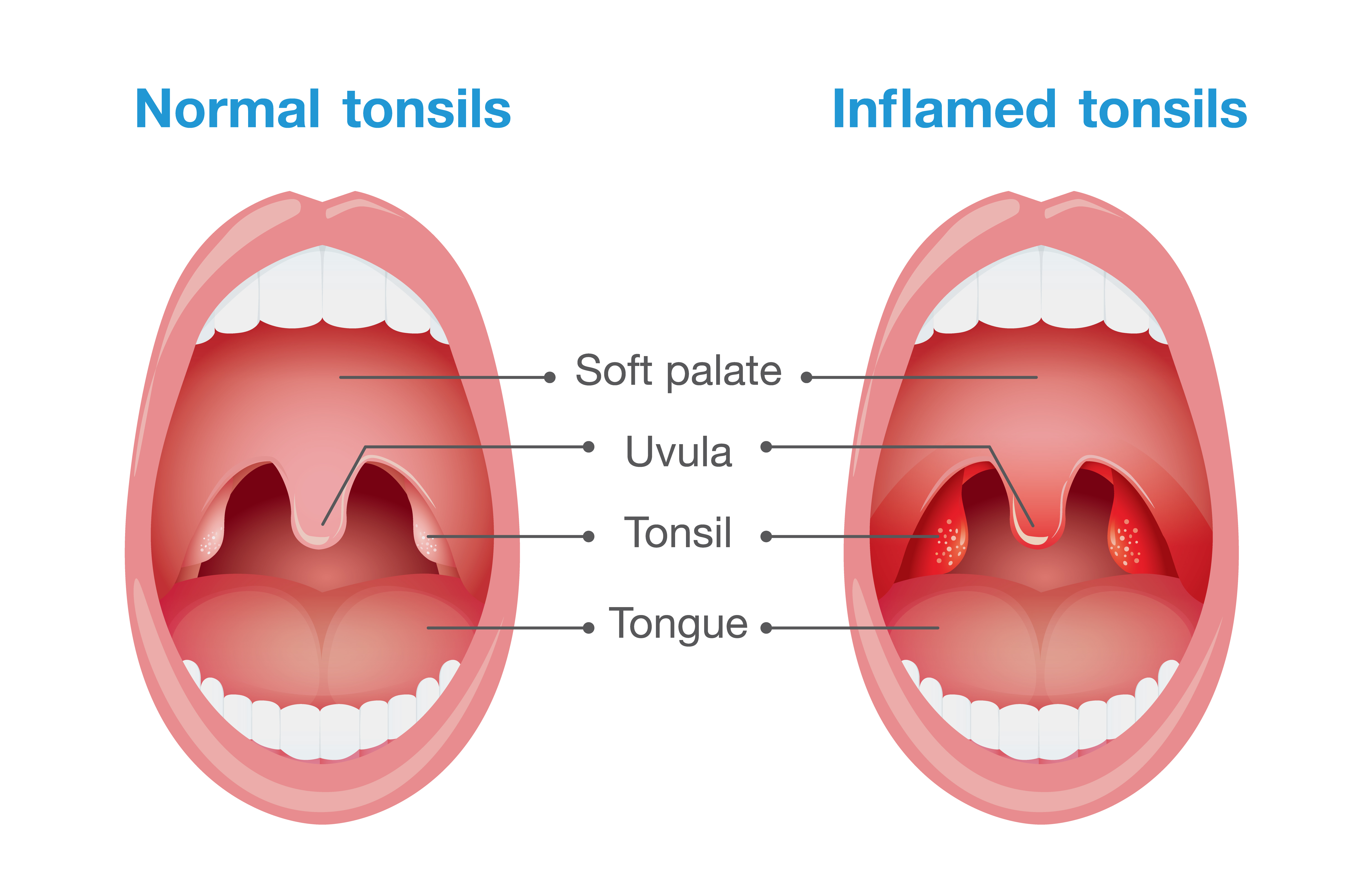If you look down the back of your throat, you may be shocked to discover a small lump of hard material nestled in the folds of your tonsils. These are called tonsil stones, but what exactly are they made of?
Firstly, what are tonsils?
Despite what some people believe, the dangly thing at the back of your throat is not your tonsil – it is called the uvula and prevents food and liquid from going up your nose when swallowing.
Instead, the tonsils are located on either side of the uvula in the throat, and they are a pair of oval-shaped mounds of tissue. They have something called tonsillar crypts, which are the folds, gaps, and crevices in the tonsil.
The difference between normal tonsils and inflamed tonsils. Image credit: solar22/ shutterstock.com
Tonsils are important for the immune system as they are a first-line response to pathogens entering the respiratory tract. Tonsil removal in children is very commonly practiced – however, research has indicated that they are so important that doctors should not be so quick to conduct this procedure.
What are tonsil stones?
The fancy term for tonsil stones is tonsilloliths, and they are very common and are not normally painful or harmful, although they can cause chronic bad breath.
Tonsil stones. Image credit: super girls/shutterstock.com
They are called stones as they look like small yellow or white pebbles and can range from being extremely tiny to around gravel particle-sized. However, there have been very rare cases where the stones can be nearly the size of a ping pong ball. These stones are often nestled in the tonsil crypts and securely cocooned in your tonsil folds.
They are formed from materials and debris that get stuck, such as food or debris, bacteria, fungi, or minerals (like calcium).
Usually, these stones do not pose a risk to your health, and they are not an infection. One example of a tonsil infection is tonsillitis, and while it can cause bad breath and throat pain similar to tonsil stones, it is often paired with red, inflamed tonsils, headache, and fever.
Why do tonsil stones smell?
These stones can smell horrendous, and this in turn can give you really bad breath. Scientists have investigated this even further. One study looked at the microbial profiles and composition of the stones, and found that these stones were crawling in anaerobic bacteria that are associated with producing volatile sulfur compounds.
How to get rid of tonsil stones?
There are a few at-home methods that people can use to get rid of tonsil stones.
- Coughing: Sometimes the simple act of coughing can help loosen these stones so they can be spat out.
- Gargling: Vigorously gargling salt water may help dislodge the tonsil stones.
- Using an object: This is a cautious approach and much care needs to be taken, but using an object like a cotton swab could help get rid of the tonsil stones. What is not recommended is using your finger, toothbrush, or a sharp item like a toothpick, as this can easily scratch the tonsils
Very rarely, a specialist may need to get involved. These are often times when the tonsil stones are too large, causing pain, or if there are recurrent infections.
There is a procedure that doctors could do which is called coblation cryptolysis. This is a laser resurfacing that can help smooth out the crevices that trap material in the first place.
Another procedure that specialists could perform is tonsillectomy, which is the surgical removal of the tonsils. This procedure is only recommended when the person experiences chronic, severe tonsil stones and no other methods have been successful.
The content of this article is not intended to be a substitute for professional medical advice, diagnosis, or treatment. Always seek the advice of qualified health providers with questions you may have regarding medical conditions.
All “explainer” articles are confirmed by fact checkers to be correct at time of publishing. Text, images, and links may be edited, removed, or added to at a later date to keep information current.
Source Link: Bad Breath? You May Have Tonsil Stones
